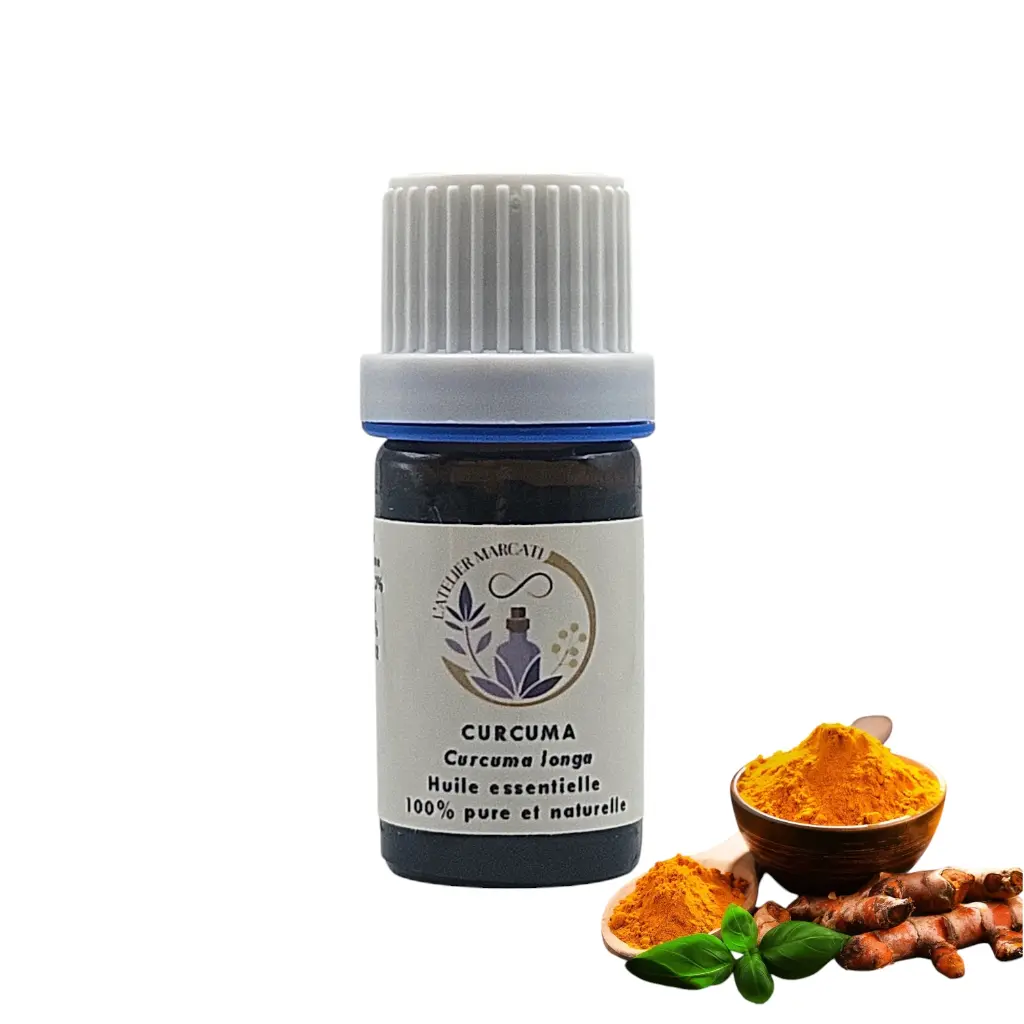Turmeric essential oil
Botanical name: Curcuma longa

Chemotype and indications
Identity card
Name: Turmeric
Botanical name: Curcuma longa
Distilled part: Rhizome
Botanical family: Zingiberaceae
Origin: Madagascar
Chemical composition:
- Ketones: Arturmerone (+/- 60%)
- Monoterpenes: Alpha Phéllandrene, Delta Sabinene
- Monoterpenol: Borneol
- Oxides: 1,8-Cineole
- Sesquiterpenes: Zingiberene (25%)
Physical properties and therapeutic indications:
- Aerocolie*
- Analgesic
- Aphrodisiac
- Carminative
- Choleretic*
- Healing
- Painful colitis*
- Dermatosis
- Intestinal parasiticide*
- Rheumatism*
- Digestive stimulant*
- Hepatobiliary stimulant*
- Vermifuge*
Additional information
Hazard: High dose: irritant, even allergenic; Abortifacient; Slightly toxic; Neurotoxic; Prohibited for pregnant women; babies; children
Legend: * powerful,** very powerful;*** extremely powerful (power value for the associated pathology)
PHYSICAL PROPERTIES AND THERAPEUTIC INDICATIONS:
Aerocolia*
Analgesic
Aphrodisiac
Carminative
Choleretic*
Healing
Painful colitis*
Dermatosis
Intestinal parasiticide*
Rheumatism*
Digestive stimulant*
Hepato-biliary stimulant*
Dewormer*
Reference and bibliographic source: Lily BAYER and Dr Hervé STAUB, (2013) “In-depth treatise on Phyto and Aromatherapy”, Ed. Grancher. p. 490.
INDICATIONS IN AROMATHERAPY AND THE USE OF ESSENTIAL OILS DO NOT CONSTITUTE A MEDICAL DIAGNOSIS AND DO NOT REPLACE THE ADVICE OF A DOCTOR OR MEDICAL TREATMENT!



